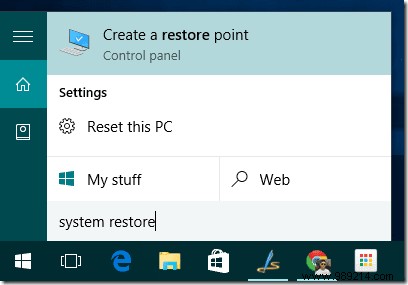Windows Defender is the default anti-malware software that comes with Windows 10 and is nothing new. We have seen this since the days of Windows 7. Windows has integrated Microsoft Security Essentials with Windows Defender to protect your computer against malicious files. The software is good, but only for basic needs. Also, it doesn't offer the robust firewall, internet and email security that most security suits like Kaspersky Internet Security provide.
ContentsLet's create a system restore pointDisable Windows Defender on Windows 10Using NoDefenderConclusionI've been a fan of Kaspersky Antivirus for years now. I still remember the pig cry as the sound it made when a virus was detected. Nonetheless, it was and is an excellent security sequel. But it does not work well with other antivirus installed in the system. Likewise, many other security combinations are not compatible with Windows Defender installed on the system.
So let me show you how to completely disable it on your computer.
Note: This is a one-way ticket to disable defender Windows 10. Please create a system restore point first if you need to go back to the starting line. Don't worry, we'll take care of that too.
The easiest way to open the System Restore settings window in Windows 10 is to find it in the Start menu. Once you see the item Create a restore point click on it to open the System Properties . Under the System Protection you will see the list of all available drives and the status of System Restore protection.

If you are running it for the first time on Windows 10, chances are it is disabled for all drives. Select the system drive and click Configure. Here, enable protection and dedicate disk space for System Restore. Ideally 7-10% would suffice.


Once you're done, click the Create button , give a name and then create the restore point. It may take some time for Windows 10 to set up your system restore point.

If you want to restore your computer, click System Restore in the System Protection tab select the restore point and wait for the system to reboot and apply the changes.

OK, we just summarized System Restore settings in Windows 10, and I'm sure it will help you in many other problems you might encounter in Windows 10. Getting back on topic, let's see how to disable Windows Defender completely on Windows 10.
Step 1: Click on the start menu and select Settings to open modern settings in Windows 10. Find Windows Defender settings here and launch it.

Step 2: Here turn off the Real-Time Protection and Cloud-based protection . Once you save the settings, a notification window will appear stating that your computer might be at risk and you will be asked to enable protection again. You must choose to ignore the notification.

Now, if you open Windows Defender, you will see that real-time protection is disabled. But I noticed that it turns on automatically after restarting your computer. So let's see how to permanently disable it once and for all.
We'll be using a nifty app called NoDefender to permanently disable Windows 10 Defender. Download the file and run it with administrator privileges. First of all, the app will ask you to disable real-time protection and cloud protection which we have already done.

When you click Next you will see a button called Turn off Windows Defender . Click on the button. You will not receive any popup or confirmation message of any kind. So click the button once or twice and quit the application.

Finally, when you launch Windows Defender, it will give you an error message that monitoring has been disabled and you can install any third-party antivirus on your computer.

So that was it, simple and easy. This time we kept it simple and didn't mess with registry and group policy. Don't forget to create a system restore point, just in case you change your mind about it.